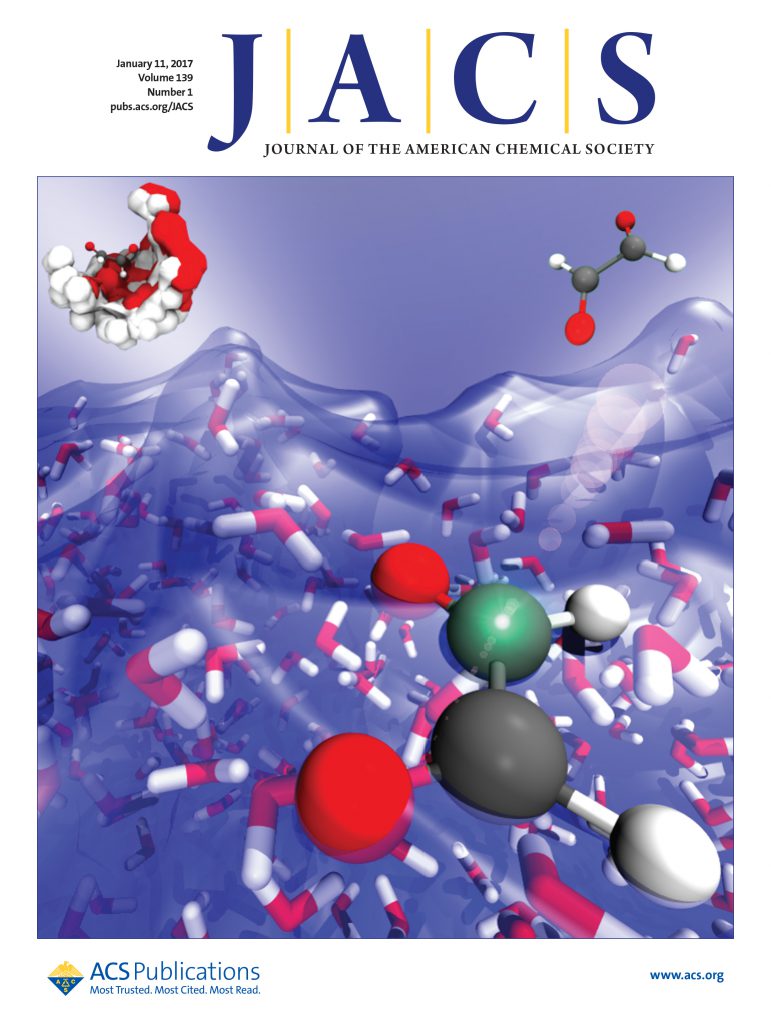CO-Tolerant Pt1-MoOx/Mo2N Catalyst for Efficient Activation of C–H and O–H Bonds toward Alcohol Dehydrogenation
IF 15.6
1区 化学
Q1 CHEMISTRY, MULTIDISCIPLINARY
引用次数: 0
Abstract
Excessively strong adsorption of CO onto a Pt-based catalyst results in the poisoning effect during numerous CO-containing catalysis reactions, including the dehydrogenation process of alcohols. Traditional strategies via modifying the electronic state of Pt atoms are beneficial for weakening CO adsorption; however, they are normally detrimental to C–H cracking, thereby degrading catalytic efficiency toward alcohol dehydrogenation reaction. In this work, we present a synergistic function of Pt1 single atoms and heterostructured MoOx/Mo2N for efficiently dehydrogenating alcohols, allowing high CO resistance along with excellent capacity for C–H and O–H activation. This conjunction renders electron transfer via a strong Pt-MoOx/Mo2N interaction and thus induces the low 5d occupancy of Pt sites, enabling the facile CO desorption, which thereby boosts the efficiency of entire reaction cycles. Based on in situ structural characterizations and isotopic labeling analysis, we found that the spontaneously formed thin MoOx-Ov layer enables the barrierless breakage of O–H bonds even at as low as room temperature, which further energetically facilitates C–H cracking on interfacial Pt1 sites. Therefore, this strategy can be applied to fabricate CO-tolerant Pt-based catalysts toward numerous CO-containing reactions without compromising reactivity by coupling the advantages of single-atom and defective support materials.

醇脱氢过程中C-H和O-H键高效活化的耐共容Pt1-MoOx/Mo2N催化剂
在许多含CO的催化反应中,包括醇的脱氢过程中,CO在pt基催化剂上的过强吸附会导致中毒效应。通过改变Pt原子电子态的传统策略有利于减弱CO的吸附;然而,它们通常不利于C-H裂解,从而降低醇脱氢反应的催化效率。在这项工作中,我们提出了Pt1单原子和异质结构MoOx/Mo2N的协同作用,可以有效地脱氢醇,从而具有高的CO抗性以及出色的C-H和O-H活化能力。这种结合通过强烈的Pt- moox /Mo2N相互作用实现电子转移,从而诱导Pt位点的低5d占用,使CO易于解吸,从而提高整个反应周期的效率。基于原位结构表征和同位素标记分析,我们发现自发形成的薄MoOx-Ov层即使在低至室温的情况下也能使O-H键无障碍断裂,这进一步促进了界面Pt1位点上的C-H裂解。因此,该策略可以应用于制造耐co的pt基催化剂,用于许多含co的反应,而不会通过耦合单原子和缺陷支撑材料的优点而影响反应性。
本文章由计算机程序翻译,如有差异,请以英文原文为准。
求助全文
约1分钟内获得全文
求助全文
来源期刊
CiteScore
24.40
自引率
6.00%
发文量
2398
审稿时长
1.6 months
期刊介绍:
The flagship journal of the American Chemical Society, known as the Journal of the American Chemical Society (JACS), has been a prestigious publication since its establishment in 1879. It holds a preeminent position in the field of chemistry and related interdisciplinary sciences. JACS is committed to disseminating cutting-edge research papers, covering a wide range of topics, and encompasses approximately 19,000 pages of Articles, Communications, and Perspectives annually. With a weekly publication frequency, JACS plays a vital role in advancing the field of chemistry by providing essential research.

 求助内容:
求助内容: 应助结果提醒方式:
应助结果提醒方式:


